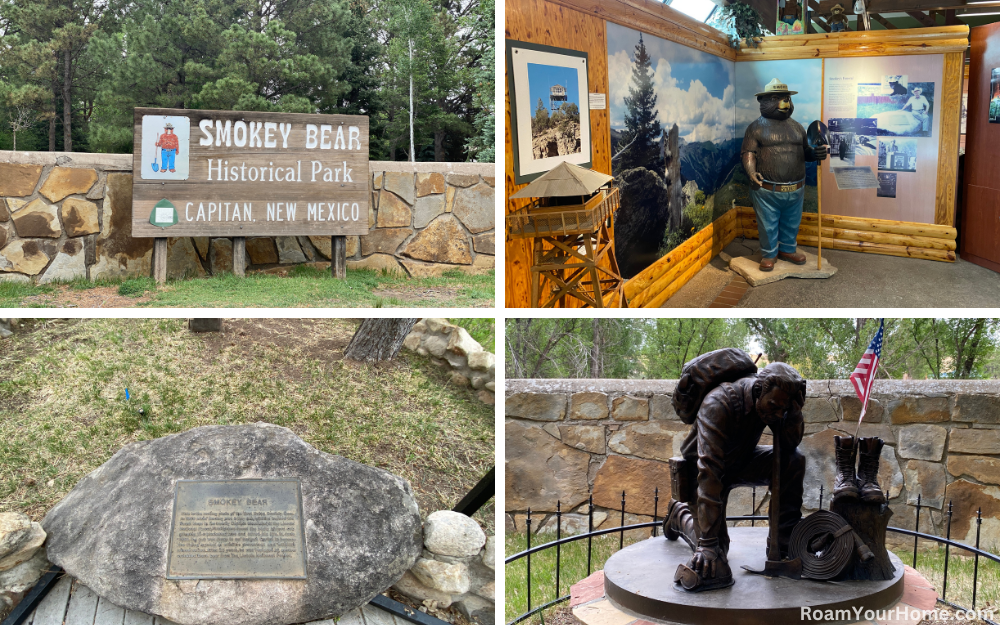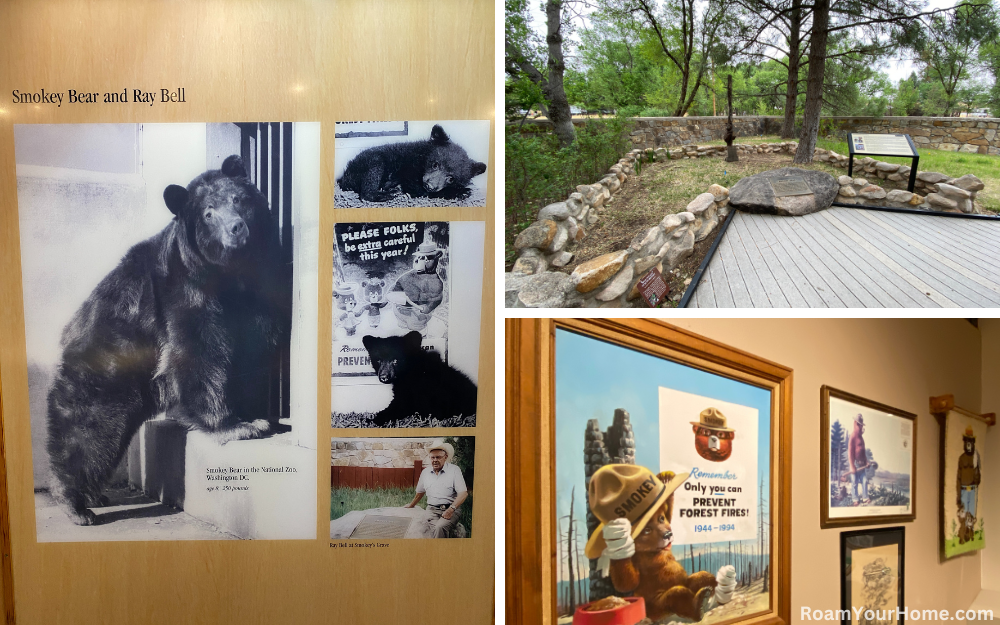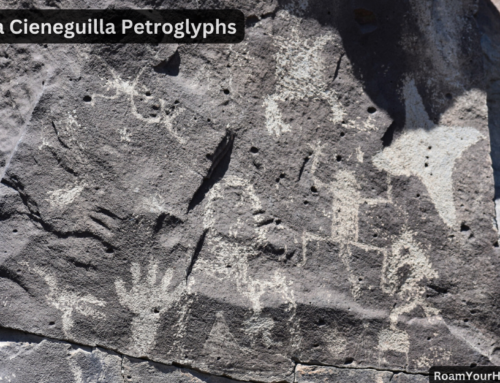
Smokey Bear Historical Park: An Origin Story
On August 9th, 1944, Smokey Bear was introduced to the world. The much-beloved bear is as easily recognized as Santa Claus and Uncle Sam, in part because the official United States Forest Service Smokey Style Manual states that: “Smokey always appears only with his traditional blue jeans, belt, buckle, and ‘campaign’ hat. Optionally, he carries a shovel… It is inappropriate to show Smokey wearing a three-piece suit or other attire not consistent with the image of Smokey Bear.”
Visiting Smokey Bear Historical Park
There are a few other things you may not already know. Smokey is much more than just a mascot. He has an entire park dedicated to him in Capitan, New Mexico. I visited Smokey Bear Historical Park on an early summer morning. It was too early. I had to wait an hour in the parking lot until they opened up. The wait was certainly worth it.
The Visitor Center was packed with Smokey History over the years. Everyone is certainly familiar with Smokey Bear walking around with his shovel, shirtless in blue jeans and his flat-brimmed hat, encouraging children and adults alike not to spark a fire. However, one of the things I found genuinely fascinating at the Visitor Center was a display explaining that there was a living Smokey Bear. And it all started in the mountains outside the park, where an orphaned black bear would capture the nation’s hearts.
“Only you can prevent wildfires” – Smokey Bear

The Untold Story of Smokey Bear
In early May of 1950, the Capitan Gap Fire sparked in the Lincoln National Forest when a cook stove overheated. At its worst, the flames were fanned by wind gusts of more than 65 miles per hour, causing the fire to jump the line of the crew fighting the fire (the firefighters had to bury themselves to escape the flames). When all was said and done, the Capitan Gap Fire ultimately blackened around 17,000 acres. After about a week of battling the fire, crews noticed something that would eventually add a face to the wildfire prevention effort and thrust it into the national spotlight. A badly-singed black bear cub, barely more significant than a boot, was found clinging, frightened, and burnt to a charred tree. This cub forever changed wildfire prevention… a living symbol of the devastation wildfires cause to the land and wildlife. The tiny bear captured the nation’s hearts and the world’s attention.
The burnt black bear cub weighed just five pounds when he was found. His fur was scorched, and his paws were badly blistered. The tiny cub was initially named “Hotfoot Teddy” by his rescuers because of those burnt paws. The fearful and injured cub was returned to the fire camp and turned over to New Mexico Game Warden Ray Bell. Bell knew the little fellow desperately needed medical attention and quickly swept him off to Santa Fe to visit a veterinarian. Veterinarian Dr. Ed Smith treated the cub’s burns. However, it was Warden Bell’s wife, Ruth, and their daughter, Judy, whose gentle touch got the cub to eat. Pictures of the cub sitting with 4-year-old Judy Bell would melt the nation’s hearts and raise the cub to celebrity status. The little cub, now named Smokey, was shining the bright light of public opinion on fire prevention and turning it into a national issue.
Smokey the Bear at the National Zoo
Named Smokey Bear after a USFS poster, the cub was moved to the National Zoo in Washington D.C., where he would become the symbol of fire prevention. As the years passed, his popularity never stopped growing. Smokey received buckets and buckets of fan mail! So much, in fact that the Postal Service gave him his own zip code, 20252 (the President of the United States is the only other dedicated zip code).
In the early 1960s, the USFS hoped to usher in the heir to the Smokey Bear title and introduced Smokey to an orphaned female black bear named “Goldie,” coincidentally also from New Mexico. The two never had any babies, so in 1971, the USFS brought in another orphaned black bear named “Little Smokey.” The Forest Service advertised it as the couple’s adopted son. Little Smokies’ training was limited because in 1976, Smokey Bear passed away of old age… 26 years after being found clinging to a blackened tree. At his death, more than 6 million kids had signed up to be Smokey Bear Junior Rangers and help him prevent forest fires! Little Smokey was the fire prevention symbol until he died in the early 1990s. After his death, the Forest Service ended the practice of keeping Smokey Bears alive. However, his message remains strong.
Smokey Bear is a part of going camping in our National Forests. He is synonymous with enjoying the outdoors safely and is a part of our culture. It’s funny to think that something so ingrained in the fabric of nature lovers started with a five-pound black bear left scared, injured, and alone in the middle of a forest.
Smokey Bear’s Grave
Visit Smokey Bear Historical Park in Capitan, New Mexico, to pay your respects. The original Smokey is buried on the property.


